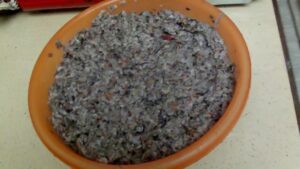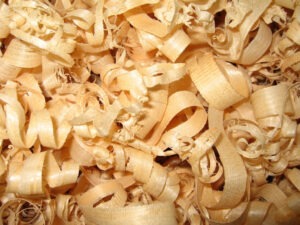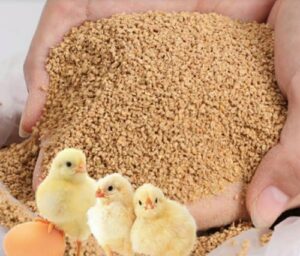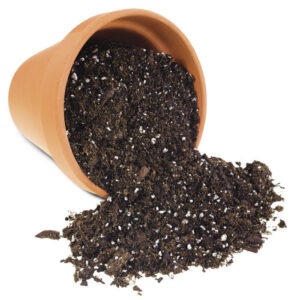 Making your cat litters is a cost-effective substitute for the pricier commercial options. The non-degradable clay in the commercial ones causes environmental concerns. Further, some may even pose allergic reactions to your pet and other health issues.
Making your cat litters is a cost-effective substitute for the pricier commercial options. The non-degradable clay in the commercial ones causes environmental concerns. Further, some may even pose allergic reactions to your pet and other health issues.
The good news is, you can try out numerous homemade cat litter alternatives that will leave you feeling self-reliant. Here are various options that you can consider.
Table of Contents
1. Use Shredded Newspapers
Shred newspapers into long thin strips and ensure that you fill enough into the litter box. It’s an effortless and inexpensive method, but you are going to need lots of them. Also, only use this method after declawing your cat.
Alternatively, you can make a clumping from dish soap, baking soda, and newspapers:
– Step
step1. Shredding your papers into long thin strips.

step2. Place them in a large container then soak the pieces in warm water and biodegradable soap.

step3. Leave them long enough until the water turns grey, and the papers achieve a cooked oatmeal consistency. The longer you leave it, the more ink you remove.
step4. Drain the water and soak the paper in clean water without soap.

step5. Remove the second batch of water, add baking soda, and knead the mixture. It will be best to use gloves at this step to avoid staining your hands with ink.

step6. Squeeze out the remaining water as much as you can and spread the crumbly and moist papers on a screen. Set it out to dry.
Once completely dried, you have your kitty litter ready for use.
– Making-of Video
If you’re still confused about how to make homemade kitty litter from the shredded newspaper after reading the above steps. Here’s a video that will provide a clearer idea for you.
2. Try Out Wood Shavings Or Sawdust
 You can also line your cat litter box with wood shavings and sawdust. It’s another reasonably inexpensive method, and you can even obtain them from your local cabinet shops or wood workshops for free.
You can also line your cat litter box with wood shavings and sawdust. It’s another reasonably inexpensive method, and you can even obtain them from your local cabinet shops or wood workshops for free.
Additionally, you don’t need to worry about deodorizing the box since wood has a natural scent that masks ammonia from your cat’s urine. However, beware that wooddust can be carcinogenic to both humans and cats. Consider using shavings since your cat can inhale the wood dust if you have to choose between the two.
3. Use Chicken Feeds As Substitute Kitty Litter
 A combination of chicken feeds with baking soda and cider shavings make a handy kitty litter alternative. It’s very absorbent and affordable, especially if you keep chicken. Besides, the baking soda will help deodorize your kitty’s box.
A combination of chicken feeds with baking soda and cider shavings make a handy kitty litter alternative. It’s very absorbent and affordable, especially if you keep chicken. Besides, the baking soda will help deodorize your kitty’s box.
Still, be a bit careful since this combination can potentially attract bugs and mice. Hence you may want to place the box in areas less accessible by these creatures. Also, monitor it closely and clean it often to keep away these unwanted animals.
4. Try Out Sand
Sand naturally attracts felines, and most outdoor cats love to relieve themselves in the sand. You can therefore have your indoor cats use the same by putting enough amount in the litter box. It clumps well when wet making it easier to scoop. Besides, it doesn’t hold urine odors, and you can even add a cup of baking soda to fight any awful smell.
One main drawback of this method is that your pet may carry sand grains in their paws to unexpected areas. You can still easily trace sands in the house if you use a trusty litter mat. It may also seem heavy and clumpy when filled with poopy.
5. Make Homemade Cat Litter From Wheat
Merely the expensive commercial wheat-based cat litters are made of course ground wheat. You can make this at home by using a grinder. Adjust the course settings, crush the berries, and pour them into the litter box. You can even grind them further, depending on your kitty’s preferences.
However, don’t let it be as ultra-fine as flour to minimize dust. Wheat perfectly clumps together when wet, for a comfortable extraction. It’s also an eco-friendly substitute that you can composite after use, for applications in your flower gardens. Nonetheless, wheat alone may not adequately mask the kitty’s waste, but you can add some baking soda to eliminate awful smells.
6. Use Pellets
 If you keep rabbits that consume alfalfa pellets, you can use the feeds as litter and line them in your kitty box. They are biodegradable, and this an eco-friendly alternative. However, use pellets with caution, since too much may increase the level of dust in your house. Still, you can easily track it for easier cleaning.
If you keep rabbits that consume alfalfa pellets, you can use the feeds as litter and line them in your kitty box. They are biodegradable, and this an eco-friendly alternative. However, use pellets with caution, since too much may increase the level of dust in your house. Still, you can easily track it for easier cleaning.
On the other hand, you can also use horse beddings pellets, made from sawdust. Though it’s quite an unusual option, they are highly absorbent and affordable. Mix them with water, add little baking soda, then set them up in the litter box.
The main demerit of this option is that when wet, the pellets swell up and quickly disintegrates into sawdust. As a result, the particles can overflow and scatter on the floors. Therefore, only use an appropriate mount.
Following is the best good-value Pellets for homemade kitty litter we recommended:
7. Make Use Of Potting Soil
 Like sand, felines love the soil’s texture and thus feel comfortable eliminating their waste in it. If you wish to prevent dust particles from scattering all over your house, then this is an ideal solution. It’s readily available, and a litter box full of potting soil naturally attracts cats.
Like sand, felines love the soil’s texture and thus feel comfortable eliminating their waste in it. If you wish to prevent dust particles from scattering all over your house, then this is an ideal solution. It’s readily available, and a litter box full of potting soil naturally attracts cats.
Unfortunately, it’s the messiest alternative, and the dark dirt colors can make your house very dirty. Worse still, the soil could harbor some germs if you get it from just any place. Further, it doesn’t clump well or cover the cat’s waste odor.
If you still want to try this cost-effective method, make it a habit to keep your house fresh and clean. Also, add baking soda to mask the odors and put several litter mats around the box to control the spread of dirt.
Conclusion
If you own a cat, then you understand that pet maintenance can be quite expensive. Fortunately, the above guide on how to make homemade kitty litter outlines some helpful solutions to help you save money.
It’s worth noting that cats can resent change and may refuse to use the new litter box. Instead of attempting all the above methods in a single week, be patient and gradually mix more of the new litter into the old one. Also, try out various options once in a while and pick one that your cat loves most.

